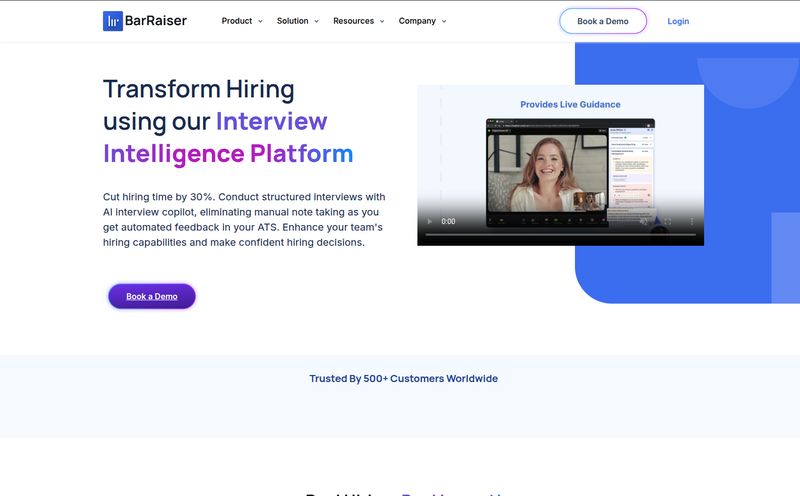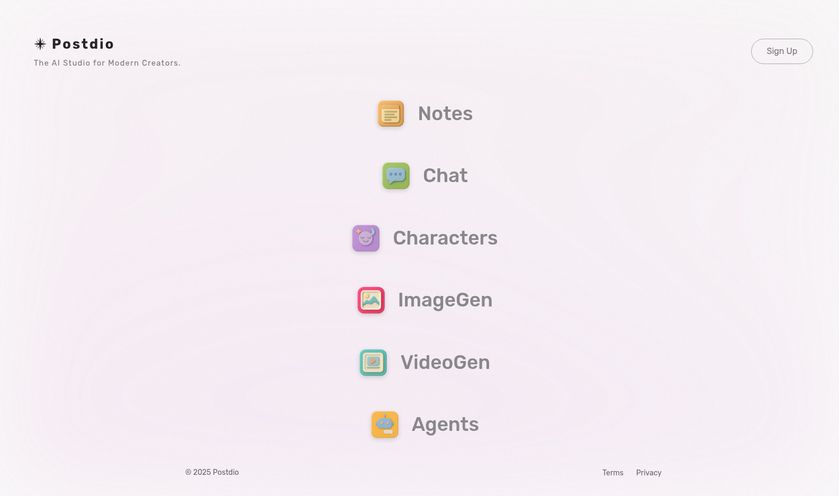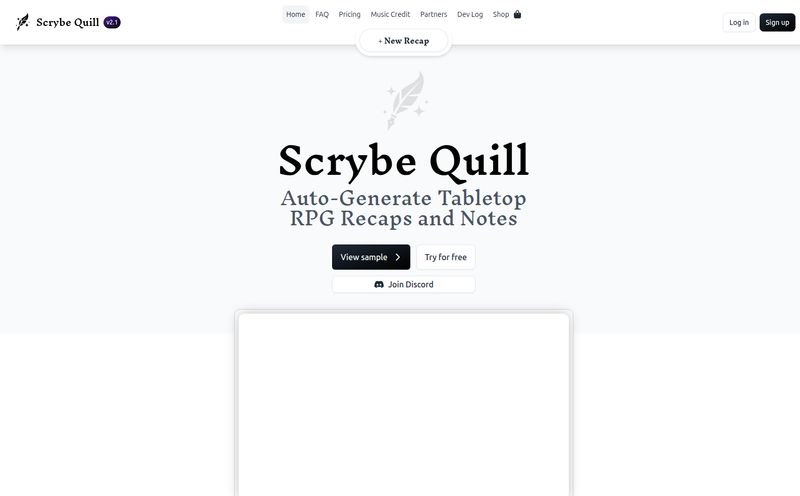We've all been there. You're halfway through a two-hour tutorial on YouTube about advanced CSS techniques or a deep-dive Coursera lecture on macroeconomics. Your intentions are pure. You've got your Notion workspace open, ready to capture every golden nugget of information. Ten minutes in, you're dutifully typing away. Forty-five minutes in, you’re alt-tabbing between the video and Notion like a frantic day trader, trying to pause at the exact right moment, type a coherent thought, and not lose your place.
By the end, your notes are a chaotic mess of half-formed sentences and random timestamps that you swear you'll organize later. Which, of course, you never do. The video was 'watched', but was the information learned? For me, a lot of the time, the answer was a resounding 'no'. It felt like pouring water into a leaky bucket.
I’ve been in the SEO and digital marketing game for years, and staying current means constant learning. Most of that learning happens through video. So when I stumbled upon a tool called Snipo, which claimed to bridge this very gap, my curiosity was definitely piqued. A side-by-side notetaker for videos that lives inside Notion? With AI flashcards? It sounded a little too good to be true. But I'm a sucker for a good productivity tool, so I decided to give it a spin.
So What Exactly is Snipo? And Why Should You Care?
At its heart, Snipo is a Chrome extension (and one for Firefox, too!) that acts as a bridge between the video you're watching and your Notion database. Forget the frantic alt-tabbing. It creates a split-screen view right in your browser: video on one side, your Notion notes on the other. It’s deceptively simple, but that’s its magic.

Visit Snipo
But calling it just a “notetaker” is selling it short. It’s more like an entire learning command center. As you watch a video from, say, YouTube or Udemy, you can type notes that are automatically timestamped. That little detail is everything. It transforms your static notes into an interactive table of contents for the video itself. It's one of those ideas thats so obvious in retrospect you wonder why it didnt exist sooner.
My First Impressions and Getting Started
I'm always a bit wary of tools that promise to 'integrate' with Notion. I've seen some clunky implementations in my day. The setup for Snipo, however, was surprisingly smooth. You install the Chrome extension, give it permission to connect to your Notion account, and... that’s pretty much it. You select a Notion page or database where you want your notes to live, and you're off to the races.
The first time I opened a YouTube tutorial with Snipo active, I had that little “aha!” moment. There it was: the video player on the left, and a clean Notion interface on the right, ready for my input. No fuss. It just worked. That’s a bigger deal than it sounds.
The Features That Actually Matter
A tool can have a hundred features, but usually only two or three are the ones you'll use every single day. For Snipo, these are the ones that have already woven themselves into my workflow.
Timestamped Notes are a Game-Changer
I can’t overstate this. This is the core of Snipo's power. Imagine you’re watching a complex coding tutorial and the instructor explains a key function at the 23:14 mark. You jot down, “Ah, so that’s how async/await really works here.” A week later, you need a refresher. Instead of scrubbing through the video trying to find that exact spot, you just go to your Notion notes, click on that sentence, and Snipo jumps you directly to 23:14 in the video. It’s like creating a personal, searchable index for all your learning content. It has already saved me hours of frustrated searching.
Let’s Talk About the AI Flashcards
This was the feature I was most skeptical about. “AI Flashcard maker” sounds like a buzzword-heavy gimmick. But I was wrong. With a click, Snipo can analyze the transcript of the video (or any webpage, which is a nice bonus) and generate a set of question-and-answer flashcards. This taps directly into the principles of active recall and spaced repetition, which are proven methods for actually retaining information.
The generated cards aren't always perfect, of course, AI is still AI. But they provide a fantastic starting point. You can edit them, create your own, and then—and this is great for serious learners—export them directly to Anki, the gold standard for spaced repetition software. It shifts you from being a passive content consumer to an active participant in your own education.
Screenshots, Clips, and Transcripts... Oh My!
Beyond the main events, the supporting features are solid. A quick keyboard shortcut to grab a screenshot of a diagram or a slide is incredibly handy. You can also capture short video clips of specific explanations. And having access to the full video transcript right in your note-taking panel is brilliant for grabbing exact quotes or searching for keywords. It’s a well-rounded toolset.
Who is Snipo Really For?
Let's be clear: if you live and die by Evernote or just use a physical notebook, Snipo isn't for you. Its DNA is intertwined with Notion. But if you're part of the massive and growing tribe of Notion users, this tool feels like a missing piece of the puzzle.
I see it being invaluable for:
- Students: Taking notes on online lectures from Coursera, edX, or even university portals.
- Lifelong Learners: Anyone who uses platforms like Skillshare, Udemy, or LinkedIn Learning to pick up new skills.
- Professionals & Hobbyists: People like me who watch countless YouTube tutorials to stay sharp in their field, whether it's marketing, coding, graphic design, or woodworking.
The list of supported providers is already impressive, covering most of the big names in online education. It shows the developers know their audience.
The Not-So-Perfect Parts
No tool is perfect, and it's only fair to point out the potential downsides. My job is to give you the full picture, not just the marketing copy.
First, the Notion dependency is a double-edged sword. It's a massive pro if you're a Notion user, but an absolute non-starter if you're not. This isn't a standalone app; it’s an enhancement for a specific ecosystem.
Second, it's a browser extension. As anyone who relies on extensions knows, they can sometimes be a bit fragile. A Chrome update could theoretically break something, or it might conflict with another extension. I haven’t had any issues, but it’s a reality of the architecture.
Finally, while the platform support is wide, it's not universal. If your learning happens on a more obscure, niche platform, Snipo might not work there. It covers the big ones, but you should check before getting your hopes up for a specific site.
What About the Price? The Million-Dollar Question
Here’s where things get interesting. I went looking for a pricing page to see what the damage would be. And I found... an Error 404 page. As of this writing, the pricing page doesn't exist.
What does this mean? Right now, Snipo is free to install and use. My guess is that the team (shoutout to them in Kyiv, Ukraine, by the way) is in a growth phase, focusing on building a user base before introducing paid tiers. This is pretty common. My advice? Get in now. You can start using it for free, and it’s possible early adopters will be rewarded if and when they introduce premium plans. It feels like getting in on the ground floor of something that could become really popular in the productivity space.
Is It Worth It? My Final Verdict
So, is Snipo the magic bullet that fixes online video learning? Well, no single tool can do that. Learning still takes effort. But I can honestly say Snipo removes a massive amount of friction from the process.
It's transformed my video watching from a passive, lean-back activity into an engaging, lean-forward one. My notes are organized, searchable, and—most importantly—directly linked back to the source material. The barrier between watching and doing has become much, much smaller. For me, Snipo isn't just another shiny object. It’s a keeper. It's already earned a permanent spot in my productivity stack.
Frequently Asked Questions about Snipo
- Is Snipo free to use?
- As of late 2023, yes. The Chrome extension is free to install and use. While they may introduce paid plans in the future, the core functionality is currently available at no cost.
- Do I need a Notion account to use Snipo?
- Yes, absolutely. Snipo is designed specifically to work with Notion. Your notes, screenshots, and flashcards are all saved directly into a Notion page or database that you choose.
- What video platforms does Snipo support?
- It supports a wide range of popular platforms, including YouTube, Udemy, Coursera, Skillshare, LinkedIn Learning, TED, and Vimeo, among others.
- How do the AI flashcards actually work?
- Snipo uses AI to scan the video's transcript and identify key concepts. It then formulates question-and-answer pairs based on that content to help you test your knowledge. You can review these in Snipo or export them to dedicated flashcard apps like Anki.
- Can I use Snipo on a browser other than Chrome?
- Yes! While it started on Chrome, the official Snipo website also offers a download for Firefox, which is great for users who prefer that browser.
- Is it safe to connect Snipo to my Notion account?
- Connecting any third-party app requires a degree of trust. Snipo uses Notion's official API for authentication, which is the standard and secure method. It only requests permission to access the specific pages you authorize for note-taking, not your entire workspace.



